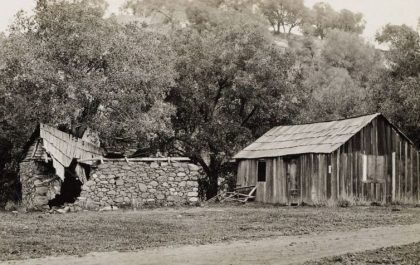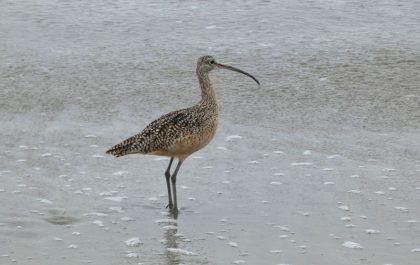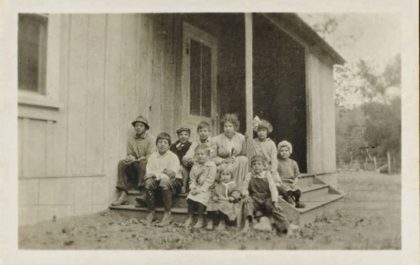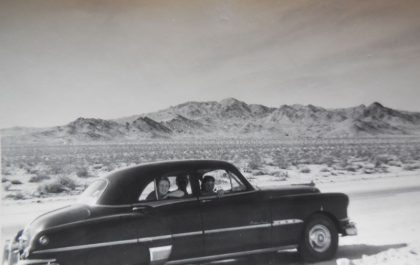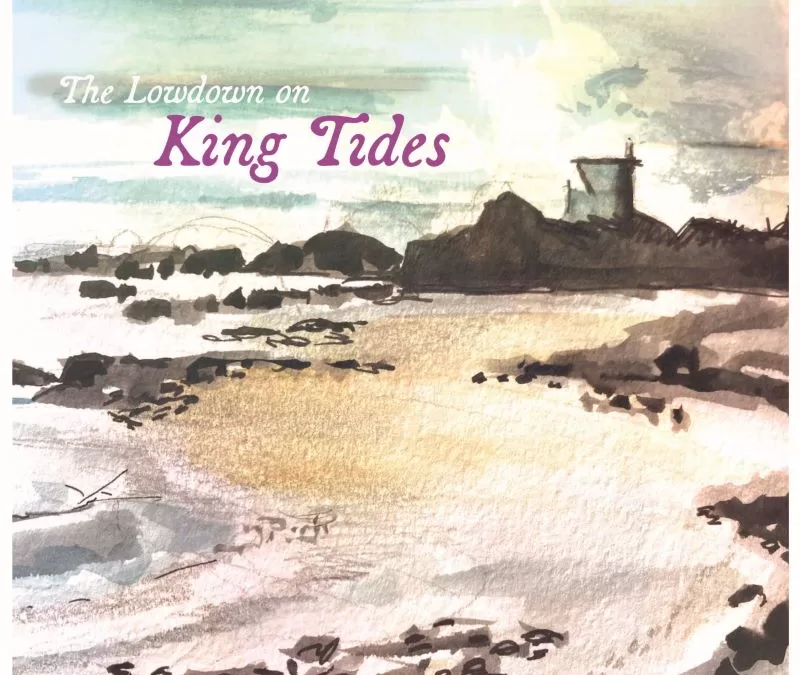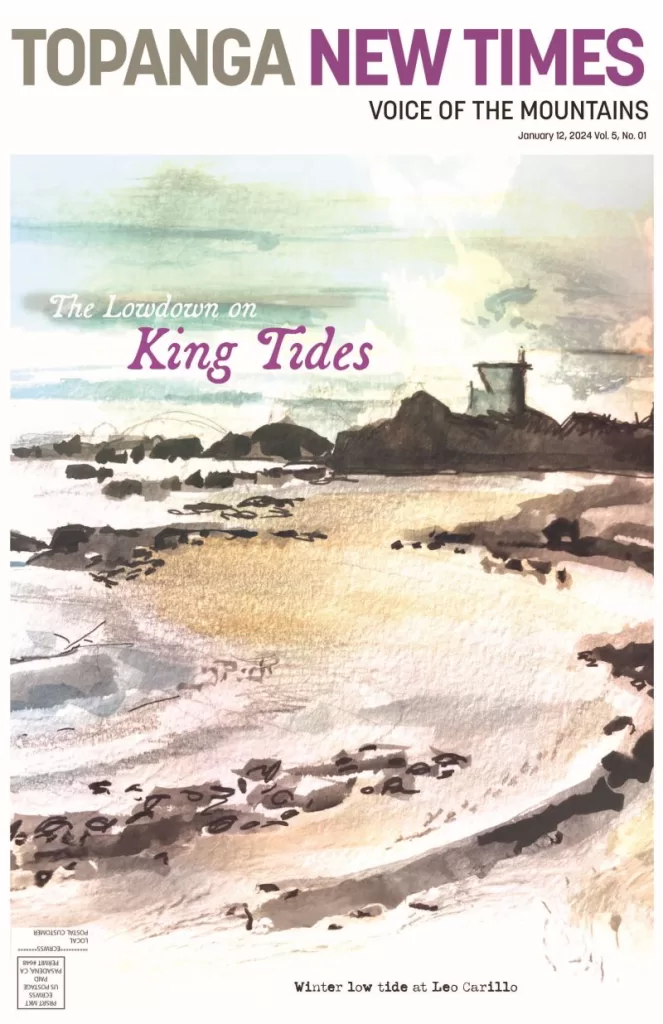
Winter King Tides make the headlines at this time of the year for their potential to cause coastal flooding, and as a grim warning of what sea level rise may look like on the West Coast in the future. The term refers to some of the highest tides of the year, but this annual winter phenomenon also comes with some of the lowest daytime tides of the year, revealing the endlessly fascinating world between the tides. The next king tide is February 9, with a 6.86-foot high tide at 8:15 a.m., and a negative 1.67-foot tide at 3:20 pm. Join us for a closer look at the world contained within our local tide pools in our Discover section. Watercolor illustration by Suzanne Guldimann, cover design by Urs Bauer.
At 4:31 a.m. on the morning of January 17,1994, a 6.7 magnitude earthquake tore through the predawn quiet with a sound like thunder. Buildings rocked and shattered, rocks came crashing down onto roadways, roads and overpasses collapsed. The power went out almost at once, leaving disoriented Angelenos fumbling for flashlights and attempting to pick their way out of an obstacle course of fallen furniture and broken glass.
Technically, the Northridge Earthquake was centered under Reseda, but the community of Northridge was ground zero for damage. At California State University, Northridge, dozens of structures, including the entire Arts building—designed in the 1960s by celebrated mid-century architect Richard Neutra—were red-tagged. Sixteen people died when a Northridge apartment building pancaked. The destruction the earthquake generated extended all the way from Palmdale in the desert to Santa Monica at the coast. Hundreds of thousands of homes and businesses were damaged, including eleven major hospitals. Sections of the 10, 14, 118 and 210 freeways buckled and collapsed.
In Topanga, the temblor tumbled boulders onto Topanga Canyon Blvd., toppled furniture, and shattered glass. Several houses in the Skyline Drive neighborhood were red tagged. A group of volunteers went door to door, checking on residents, making sure neighbors were safe and had the things they needed— first aid, medicine supplies, and water. Those volunteers, brought together just a few months earlier in the aftermath of the Old Topanga Fire, would become the Topanga Coalition for Emergency Preparedness. This non profit organization is alive and well and still looking after the community.
The fault that released this massive destructive force was a “blind,” or buried thrust fault. It caught everyone by surprise, but as devastating as this earthquake was, it wasn’t “The Big One”. Thirty years later, we’re still waiting for that one. It could come tomorrow, next year, or maybe not for a hundred years, but it is coming, along with who knows how many other geological surprises like the one generated by the previously unknown and unnamed Northridge Blind Thrust Fault in the predawn hours of that January morning 30 years ago. We all need to be ready. Now would be a good time to check emergency supplies and evacuation plans.
Some Topanga residents had to put their evacuation plans into practice over the weekend, when the storm forecast triggered evacuation orders on Santa Maria Road, where the burn scar from last year’s Owens fire created the potential for debris flows and mudslides. No serious problems occurred during this round of rain, but the risk was real.
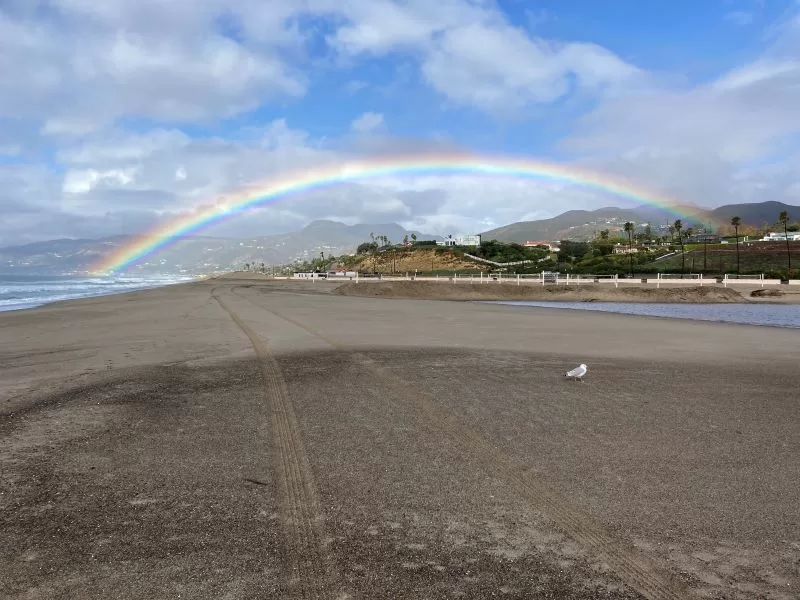
Photo: Suzanne Guldimann
We were saddened to learn of the passing of two of this community’s teachers and wisdomkeepers this month. Topanga artist and art teacher Joe Blaustein taught painting and life drawing through UCLA extension and in his home for decades. He was 100. Local historian and author Ernest Marquez devoted his long life to preserving and restoring the history of his family, the original owners of the 6,656-acre Mexican land grant that would become Pacific Palisades and Santa Monica. He was 99. Both men will be missed, but like old growth trees that shake the forest when they fall, they have planted the seeds for future artists and historians through the knowledge they shared.
We know many Topanga families who have adopted dogs rescued from the South Korean meat trade. The controversial custom of consuming dog meat there is finally ending. South Korea’s National Assembly has just approved legislation that will eliminate the trade by 2027. The news comes after the South Korean government revealed plans to move the nation towards a plant-based food system. Not all news is bad news.
And finally, Mill Creek Ranch, an equestrian property in Old Canyon where two generations of Angelenos have learned to ride, is now preserved as permanent parkland. The Mountains Recreation and Conservation Authority announced early this month that it had successfully acquired the 27.7-acre property, which includes horse arenas, stables, parking, many onsite trails, water wells, three residences, approximately 1,400 feet of Old Topanga Creek, and ten acres of undisturbed environmentally sensitive habitat. It’s a small but important piece of the Santa Monica Mountains National Recreation Area patchwork, and a much loved piece of old Topanga that will be preserved for future generations.
Stay safe, be well.
